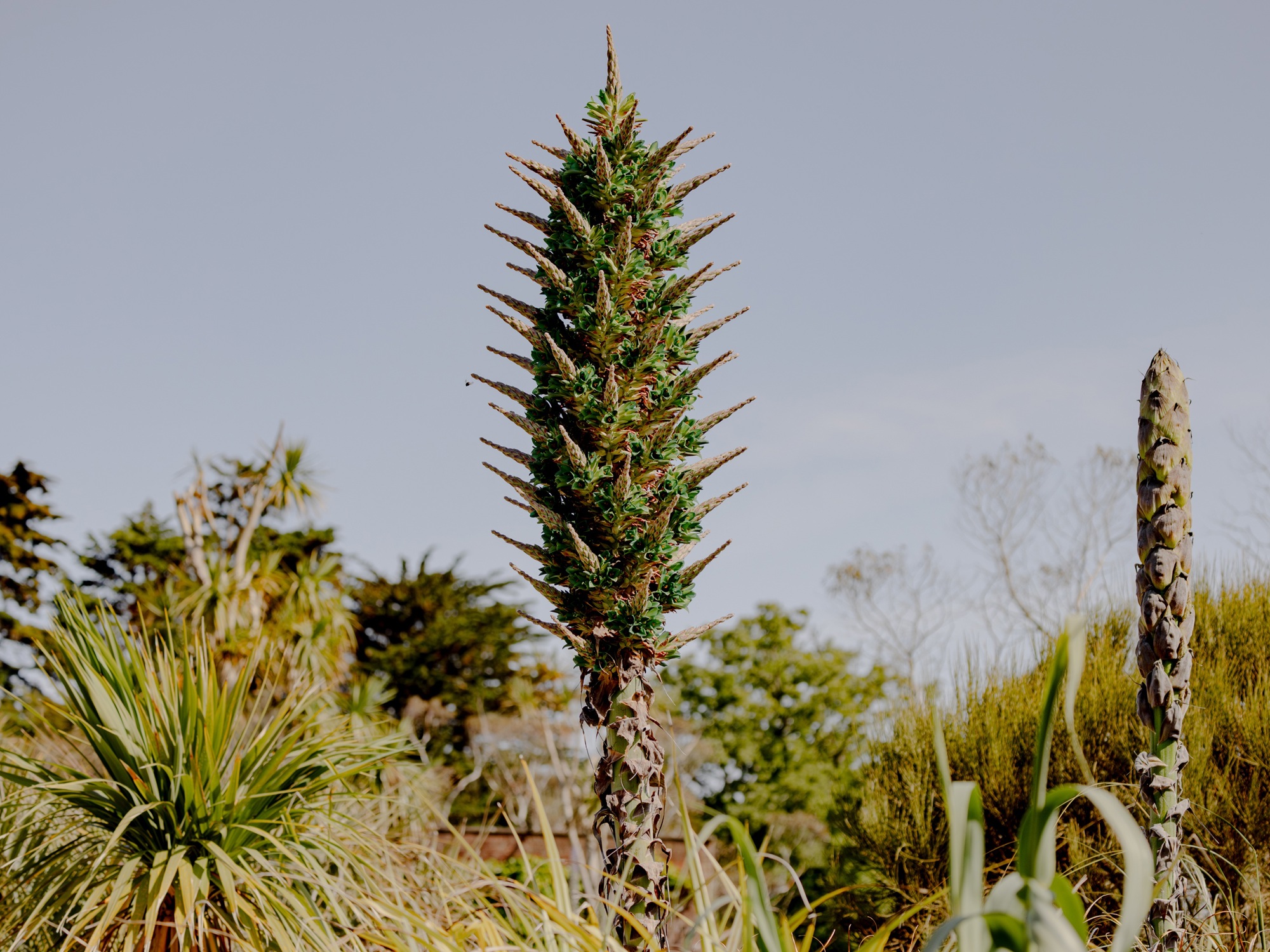Funding will support re-display of rare and endangered historic plants
The two A-Listed Victorian Palm Houses and a modernist range of 1960s glasshouses at the heart of the Royal Botanic Garden in Edinburgh (RBGE) are to be restored thanks to a £4 million grant from the National Lottery Heritage Fund. The grant will fund the re-display of RBGE's rare and endangered historic plant collections, create engaging new interpretation and deliver innovative new activities for visitors.
The two Palm Houses form the historic centre of the Garden and are outstanding examples of Victorian engineering. The octagonal Tropical Palm House, constructed in 1834, was soon considered too small, with palms sending their leaves through the roof. In 1855, a new Temperate Palm House was built to a grand design by Robert Matheson, with cast iron columns and vertical glazing that achieved exceptional height and transparency.
The Garden as a whole is a 'safe-house' for threatened species, conserving 154 of Scotland's 181 rare plants and many others that are already extinct in the wild. The glasshouses contain some of the Garden's most iconic and spectacular plants, including including the enigmatic Amorphophallus titanum from Sumatra, which spectacularly flowers at night and smells of rotting flesh. The project will ensure the safety of these globally significant living collections.
The grant will cover the creation of a new visitor experience and an enhanced programme of activities specifically designed to give a wider range of people reasons to care about their natural environment and inspire actions to address climate change, biodiversity, recovery and food security.
The project will form the historic centrepiece of the wider Edinburgh Biomes experience, which will include an area focussing on how plants have evolved and continue to adapt and a newly built contemporary glasshouse, that will provide a tropical rainforest environment, as the main entrance.
Previous RBGE projects funded by the Heritage Fund include the Botanic Cottage, an inspirational heritage hub for community and education activities and the impressive John Hope Gateway Centre designed by Edward Cullinan architect, which opened in 2009 with a Heritage Fund grant of £3.2M.
RBGE boasts a collection of 130,000 plants, some of which are two centuries old, and 13,500 species from 157 countries - the third most diverse collection in the world. The herbarium contains over three million preserved specimens, including many of those collected by Charles Darwin and many famous Scottish plant hunters.
Caroline Clark, Director for Scotland, the National Lottery Heritage Fund, said:
“We are delighted to be supporting this important project, which will see the historic heart of the Royal Botanic Garden Edinburgh restored and revitalised for the benefit of generations to come. Thanks to National Lottery players, this significant grant will rescue these iconic buildings from catastrophic failure and enable a step-change in activity, engaging wider and more diverse audiences both locally and internationally.”
Simon Milne, MBE, Regius Keeper, Royal Botanic Garden Edinburgh said:
“The significance of this award of £4m cannot be underestimated and we are hugely grateful to National Lottery players for making it possible. In committing this sum to the Edinburgh Biomes project, the Heritage Fund is providing unprecedented resources for public action in protecting our fragile world.
“In an era where 40 per cent of all known plants are under threat, we can inspire and empower people across the country and around the globe to join us in fighting back against the biodiversity crisis and climate emergency. This funding not only goes a considerable way to securing the care of a unique Living Collection of plants, but also supplies the Royal Botanic Garden Edinburgh with previously unattainable opportunities for public engagement.
“Now, we can reimagine our visitor experience. Visionary interpretation and activities will communicate the vulnerability of life on Earth, providing intellectual and physical access to plants, their applications in all our lives and the need for habitat conservation. By inspiring everyone to care about the environment and play their part, there is real opportunity to make tangible change.”

